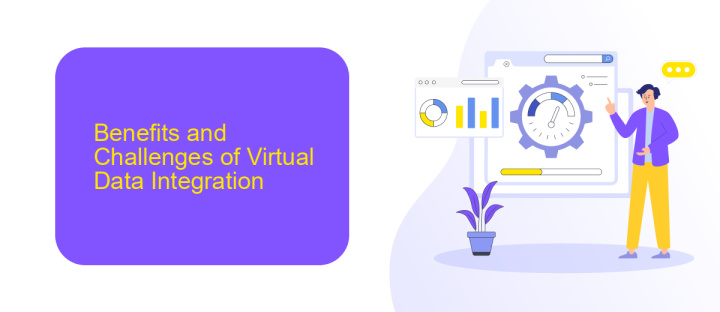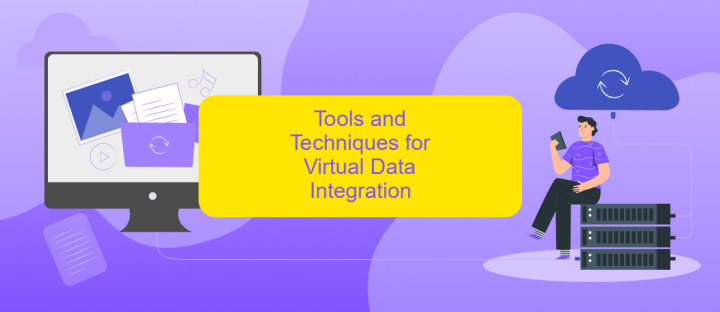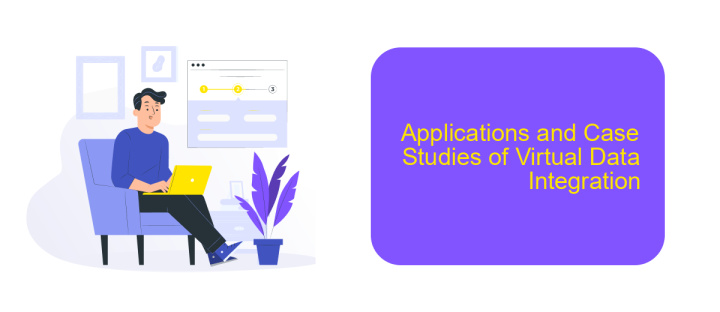Virtual Data Integration
Virtual Data Integration (VDI) is a revolutionary approach that enables seamless access to and manipulation of data from multiple sources without the need for physical consolidation. By creating a unified virtual view, VDI allows businesses to streamline data management, enhance decision-making, and improve operational efficiency. This article explores the key principles, benefits, and implementation strategies of Virtual Data Integration.
Introduction
Virtual Data Integration (VDI) is a modern approach to integrating data from various sources without physically moving the data. This method allows organizations to access and analyze data in real-time, providing a unified view of information across different systems. VDI is particularly beneficial for businesses that require quick access to diverse data sets without the complexities of traditional data warehousing.
- Real-time data access
- Cost-effective solution
- Enhanced data security
- Scalability and flexibility
One of the tools that facilitate seamless virtual data integration is ApiX-Drive. This service enables businesses to connect various applications and automate data workflows without extensive coding. By leveraging ApiX-Drive, organizations can streamline their data integration processes, ensuring that they have accurate and up-to-date information readily available for decision-making. This not only saves time but also enhances operational efficiency, making VDI a valuable asset for any data-driven enterprise.
Benefits and Challenges of Virtual Data Integration

Virtual Data Integration (VDI) offers numerous benefits, including real-time data access and reduced data redundancy. By enabling seamless connectivity between disparate data sources, VDI allows organizations to gain a holistic view of their data without the need for extensive data warehousing. This approach enhances decision-making processes by providing up-to-date information and reduces the costs associated with data storage and management. Tools like ApiX-Drive further simplify the integration process by offering automated workflows and easy-to-configure connectors, making it accessible even for non-technical users.
However, VDI also presents several challenges. Ensuring data consistency and accuracy across multiple sources can be complex, especially when dealing with large volumes of data. Security is another critical concern, as integrating various data sources can expose sensitive information to potential breaches. Additionally, the initial setup and ongoing maintenance of VDI systems require significant expertise and resources. Despite these challenges, the benefits of real-time data access and streamlined operations make VDI a compelling choice for modern organizations looking to leverage their data assets effectively.
Tools and Techniques for Virtual Data Integration

Virtual Data Integration (VDI) leverages various tools and techniques to streamline data access and integration without the need for physical data movement. These tools facilitate real-time data access, ensuring that organizations can make timely decisions based on the most current information available.
- Data Virtualization Platforms: Tools like Denodo and Red Hat JBoss Data Virtualization provide a unified interface to access data from multiple sources.
- API Management Solutions: Services such as ApiX-Drive enable seamless integration by connecting various APIs, automating workflows, and ensuring data consistency across platforms.
- ETL (Extract, Transform, Load) Tools: Solutions like Talend and Informatica help in transforming and loading data into virtual data layers for streamlined access.
- Data Integration Middleware: Middleware solutions like Apache Camel facilitate the integration of disparate data sources through standard protocols and formats.
These tools and techniques not only enhance data accessibility but also reduce the complexity and cost associated with traditional data integration methods. By leveraging VDI, organizations can achieve a more agile and responsive data management strategy, ultimately driving better business outcomes.
Applications and Case Studies of Virtual Data Integration

Virtual Data Integration (VDI) is revolutionizing the way organizations manage and utilize their data. By providing a unified view of data from disparate sources without the need for physical consolidation, VDI enables more agile and efficient data management processes.
One of the primary applications of VDI is in business intelligence, where it facilitates real-time data analysis and reporting. This approach is particularly beneficial for companies with complex data environments, such as those in finance, healthcare, and retail.
- Real-time data analytics for improved decision-making
- Enhanced customer insights through integrated data sources
- Streamlined data governance and compliance
Case studies have shown that tools like ApiX-Drive can significantly simplify the integration process. ApiX-Drive allows businesses to connect various data sources seamlessly, reducing the need for manual data handling and ensuring data consistency. This leads to more accurate analytics and better overall business performance.


Future Trends and Innovations in Virtual Data Integration
Virtual Data Integration (VDI) is rapidly evolving, driven by advancements in artificial intelligence and machine learning. These technologies are enabling more sophisticated data harmonization and real-time analytics, making it easier for organizations to derive actionable insights from disparate data sources. Moreover, the integration of blockchain technology promises enhanced data security and transparency, which is crucial for industries dealing with sensitive information.
In the near future, we can expect VDI solutions to become more user-friendly and accessible, with platforms like ApiX-Drive simplifying the integration process. ApiX-Drive offers a streamlined way to connect various applications and automate workflows, reducing the need for extensive technical expertise. Additionally, the growing adoption of edge computing will facilitate faster data processing and reduced latency, further enhancing the capabilities of VDI. As these innovations continue to unfold, businesses will be better equipped to handle the complexities of data integration, ultimately driving more informed decision-making.
FAQ
What is Virtual Data Integration?
How does Virtual Data Integration differ from traditional ETL processes?
What are the benefits of using Virtual Data Integration?
How can I implement Virtual Data Integration in my organization?
What challenges might I face with Virtual Data Integration?
Apix-Drive will help optimize business processes, save you from a lot of routine tasks and unnecessary costs for automation, attracting additional specialists. Try setting up a free test connection with ApiX-Drive and see for yourself. Now you have to think about where to invest the freed time and money!

